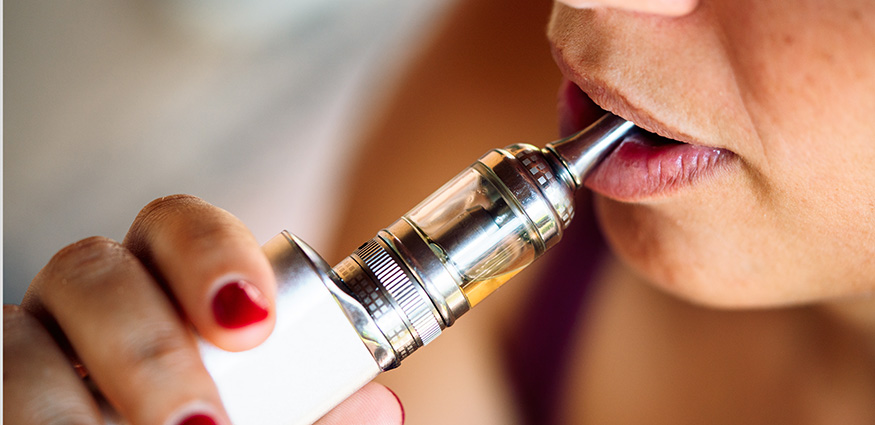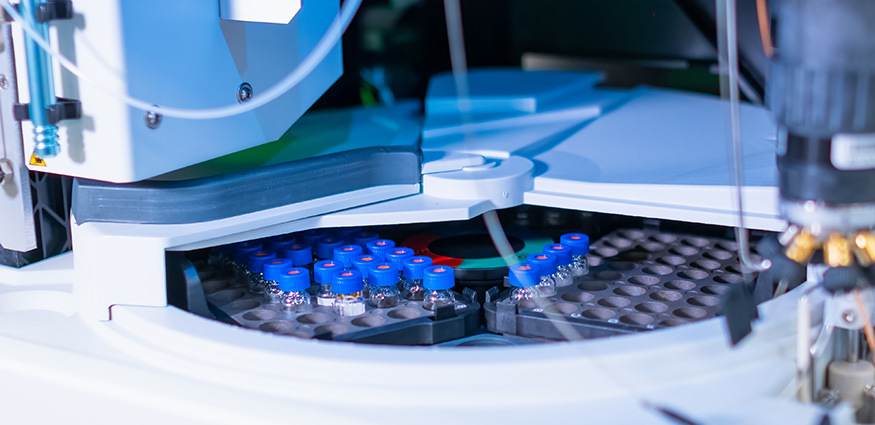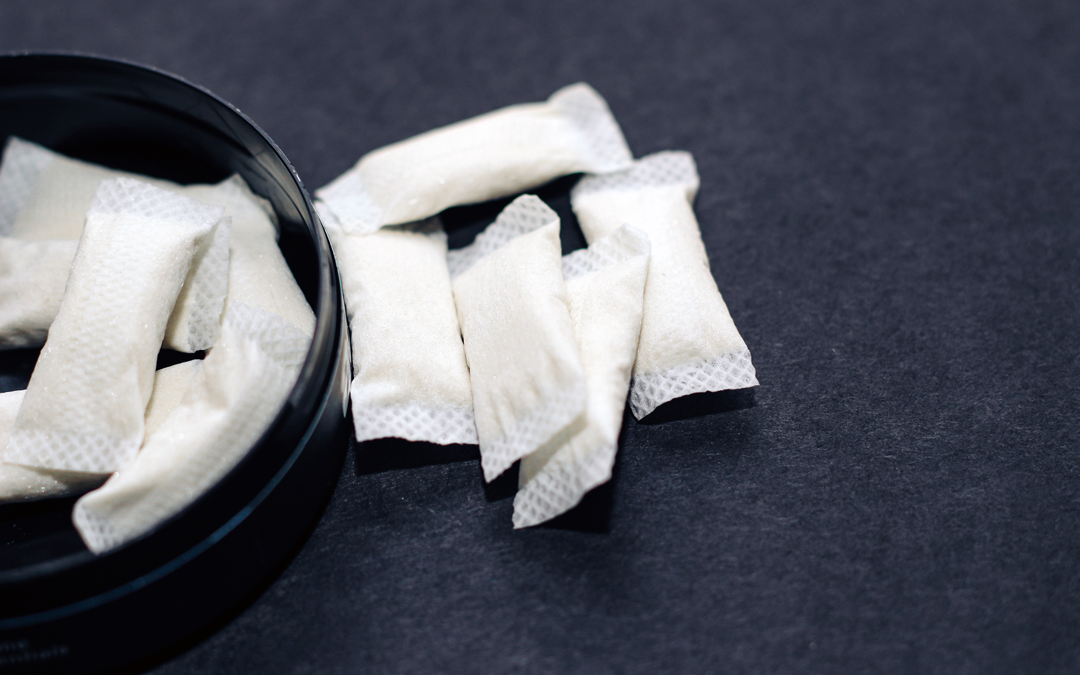It’s important to perform e-liquids testing for nicotine content in vape products due to regulatory requirements. Fortunately, a high-quality analytical lab that specializes in tobacco and nicotine-containing products can do this for you.
In this post, we explain how nicotine is measured in e-liquids and vape juice so you can meet requirements and get your product to market. We also explain how to choose the right lab to conduct your testing.

Regulatory compliance is the primary reason to measure nicotine in your products, but it’s also important for product consistency and brand trust.
Why Perform E-Liquid Testing for Nicotine Levels?
- It’s required by Regulatory Agencies.
- Canada’s Nicotine Concentrations in Vaping Products Regulations limit nicotine in e-cigarettes and vaping products to 20 mg/mL when tested using ISO standard 20714. Since Health Canada regulates all vaping products that contain nicotine, your products must meet the prescribed nicotine standard to be compliant with the regulations to get into the market without any problems.
- The U.S., meanwhile, does not currently limit nicotine levels in e-cigarettes, e-liquid, or vape juice, but a bill was introduced in 2021 to cap e-cigarette nicotine levels at 20 mg/mL. While the legislation has not progressed as of October 2025, the U.S. FDA has proposed capping nicotine in combustible cigarettes, which could portend a similar cap for e-liquids.
- International regulations may also have nicotine restrictions. For example, the UK limit is 20 mg/mL with total volume limits on the e-liquid based on product style.
- Measuring nicotine levels is essential to building your brand.
- Nicotine testing is also instrumental in product development as results can help maintain consistency and solve problems at different stages of production.
- Knowing how much nicotine is in your product can be valuable information to the consumer as part of product selection.
How to Perform E-Liquids Testing for Nicotine
There are many methods available for e-liquids testing. But some methods will not meet regulatory requirements depending on your region.
The Nicotine Concentrations in Vaping Products Regulations in Canada prescribe laboratory method ISO 20714, entitled “E-liquid – Determination of nicotine, propylene glycol and glycerol in liquids used in electronic nicotine delivery devices – Gas chromatographic method” for verifying that nicotine content meets requirements.
This is the method Health Canada will use to determine compliance with the maximum nicotine concentration. As such, you should partner with a nicotine testing lab with the capability to conduct this test method to measure nicotine levels in your products.
Gas Chromatography Method of Measuring Nicotine

Health Canada regulations prescribe use of gas chromatography for measuring nicotine in e-liquid, vape juice, and ENDS products.
Other Instruments for Nicotine E-liquids Testing
There are other analytical methods to measure nicotine levels in e-liquids, including gas chromatography mass spectrometry (GC-MS) and high-performance liquid chromatography.
HPLC has been used to measure nicotine levels in numerous research studies. It can be used with various detectors, including UV visible (HPLC-UV) or photodiode array detection (HPLC-PDA).
Health Canada will, however, use the ISO 20714 gas chromatographic method when ensuring compliance with Nicotine Concentration in Vaping Products Regulations, which means your lab should use this method, too.
3 Things to Look for in Your Nicotine Testing Lab
Choosing the best analytical lab for nicotine testing is an important step in ensuring regulatory compliance and the success of your products. Here are three features to look for in your laboratory.
- Technical and Scientific Experience with e-Liquids and Vaping Products
- Although lab equipment is necessary, lab technicians must be knowledgeable in handling samples, operating instruments, and analyzing data. Working with e-liquid, vape juice, and other ENDS products is not the same as working with conventional tobacco products.
- Ensure the lab has adequate experience handling the nicotine products you need tested.
- The Right Accreditations
- Check if the nicotine testing lab has any formal and/or national accreditations, especially ISO 17025, the pinnacle of third-party lab accreditations.
- ISO 17025 is a set of protocols that analytical labs must follow to ensure accurate tests. While it’s not the only thing you should look for, accreditations are one way to ensure the lab is credible and competent in executing specific tests.
- Also, check GMP (Good Manufacturing Practices) compliance, which is enforced by Health Canada.
- GMP certification is especially important if you want to export your products to the EU, Australian, or South African markets.
- Internal Procedures
- Does the lab have set procedures for situations when tests don’t go according to plan? A good nicotine testing lab will have a set internal procedure for out-of-specification investigations to determine if a sample failed the test or it was a result of lab error.
Accurate, Timely Data to Help You Successfully Develop Products
Labstat is a world leader in e-liquid and vape juice testing, and regulatory consulting for nicotine-containing products. We use the ISO 20714 method for measuring nicotine levels, which is the same method Health Canada requires. We also understand the nuances of the regulations and have more than 45 years of experience analyzing tobacco and nicotine-containing products. In addition, our labs are ISO 17025-accredited and GMP-compliant. We offer:
- Comprehensive analytical chemistry
- In-vitro toxicology
- Microbiology
- Method development
- FDA PMTA (Premarket Tobacco Product Application) testing for electronic nicotine delivery systems
- HPHC (Harmful and Potentially Harmful Constituents) testing
- GMP consulting
- Fast TAT
- ISO/IEC 17025-accredited
See our full list of services for tobacco and nicotine-containing products here


